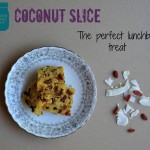Today was a pretty big day for Real Foodies in Australia.
Jessie Reimers from Get a Fresh Start has been pouring bucketloads of energy and attention into a petition advocating for the Heart Foundation to ‘Flick the Tick’. And earlier today, Jessie delivered over 50,000 signatures to the Heart Foundation from people who believe the Tick program is faulty. Beyond that; people who believe that the nutritional recommendations given by the Heart Foundation are outdated and completely off the mark. We all happen to think that the Heart Foundation needs to pick up its game.
Of course, the Heart Foundation disagrees.
They are all of a sudden reviewing both their stance on saturated fat AND their tick program, but they’re in denial (at least for now) that the negative attention they have received surrounding these issues in the last 12 months has anything to do with it… Yeah, okay, Heart Foundation… (those who haven’t been here long and don’t know me well enough yet – please imagine that last sentence read in a sarcastic tone complete with eye rolling.)
Photo credit: Get a Fresh Start
Today, I’m going to casually point out a few major flaws in the Heart Foundation’s 2009 Summary of Evidence, titled “Dietary fats and dietary cholesterol for cardiovascular health.”
I say casually, because I’m not going to hit you up with hard evidence to disprove their conclusions. Today, we’re not here to talk about recent research. I’ll save that for another post. We’re here to look at the research that the Heart Foundation upholds as the gold standard to backup their dangerous tick program.
Just a few things before we jump into it:
I am going to focus solely on saturated fats because that’s what we’re all really here to talk about, and that’s what my FATS SERIES is all about. No point wasting time on other topics for now.
I am NOT going to focus hugely on the HDL/LDL cholesterol and heart disease link. Because:
1) Dietary cholesterol doesn’t significantly impact blood cholesterol levels (even the Heart Foundation agrees with this).
2) Organisations like the Heart Foundation really enjoy dumbing things down… They promote a highly simplified ‘good fast’ vs ‘bad fats’, ‘good cholesterol’ vs ‘bad cholesterol’ view. Presumably they think we are too stupid to understand the complexities of food and its effects on our bodies (or maybe, dare I say it, the Heart Foundation doesn’t understand the complexities). The cholesterol issue is a big ol’ can of worms that I don’t want to open just yet.
3) If I didn’t limit this blog post to just one topic, and only one aspect of one topic at that, it would be super long and you’d all lose interest because (sorry) there’s no pretty pictures or a recipe at the end of this one!
So, saturated fat and only saturated fat. LET’S DO THIS!
Feel free to download a copy of the Heart Foundation Summary of Evidence and read along with me.
I’m going to take it slow, and I’ll point to page numbers as we go. For those of you not reading the summary of evidence along with us, I will be quoting directly from it.
First, I want to take a couple of quotes from the Methodology section (page 5-6) and discuss them.
“This summary of evidence built on the work of the previous dietary fats review by the Heart Foundation in 1999” (National Heart Foundation of Australia, 2009, pg 5)
Now, this statement alone is not nearly enough to make me discount the conclusions of the Summary of Evidence. No way. But it does shed some interesting light on the structure of the summary and the frame of mind of the person or team who put this summary together. Note that the current summary is not reviewing the recent evidence independently; the current summary is instead intending to build upon the old summary. I see this trend repeated throughout the 2009 summary; often, in places where it would be more appropriate to link to independent research, the authors choose to link to the 1999 Heart Foundation Summary instead. Rather than link to new evidence, the authors linked to a previous review that was written ten years before the ‘current’ one. It concerns me that the evidence was reviewed in the light of old evidence rather than starting fresh; actually, even deeper than that – this evidence was used to build on the old summary (the implication being that the old summary is still valid, we don’t need to investigate further, but we’ll cherry pick certain factoids to build up that old stuff some more). As I mentioned before, not enough yet to discount the 2009 summary entirely, but certainly an odd method to choose for a research paper or a presentation/summary of evidence. To me, it screams bias and subjectivity, rather than empirical objectivity. It seems kind of like re-publishing the same study with a few extra, selectively-chosen references. And I’m sure that wouldn’t fly in most scientific journals.
“If a review was assessed as being poor quality (no conclusive findings, no clear objective), then it was excluded.” (National Heart Foundation of Australia, 2009, pg 5)
This is another one of those raised-eyebrows-but-not-quite-enough-to-discount-the-whole-summary things. Upon reading this sentence, my seventh-grade-science-class-student-self went, “wait, what?!” And my critical-thinking-overachiever-psychology-student-self went, “now that’s ridiculous!” As I was annotating the summary of evidence, I actually highlighted this sentence and above it wrote, “WHAT?!?” <— I think that demonstrates to you how potentially ridiculous this part of the methodology is.
To throw something out based purely on ‘no conclusive findings’ is akin to research suicide. Studies can lack conclusive findings for a whole host of reasons – yes, poor research design is absolutely one of them… But so is the fact that there is no finding to be found in the first place! Perhaps the studies that were assumed to be ‘poor quality’ lacked conclusive findings because of something far from poor design. In this case, what if some of these studies examined the supposed link between saturated fat consumption and heart disease – and what if the study had no conclusive findings? What if the link doesn’t actually exist to begin with, and that’s why there were no conclusive findings? If this were the case, it would be absolutely crucial to keep those studies in the analysis. But nope. They got ditched. Big oops, Heart Foundation.
Now, let’s not get ahead of ourselves – although the Heart Foundation appear to have committed a serious empirical research faux pas here, we still don’t know which studies were excluded. All the studies that were excluded may actually have just been crap studies. We don’t know. But the eagerness to throw the baby out with the bathwater certainly speaks to the mindset of the authors going into this Summary of Evidence, and raises my suspicions (again) that the summary was not written objectively.
Now, let’s skip forward to Section 4 – Dietary fats, dietary cholesterol and CVH (page 14).
Under the sub-title FA classes, I’d like to draw your attention to the following sentence:
“The consumption of SFA and increased LDL-C levels are associated with an increase in CHD, 2, 24 although the strength of this association has recently been questioned. 5“ (National Heart Foundation of Australia, 2009, pg 14)
I’m actually not going to dispute or even discuss any of what the Heart Foundation actually said with this sentence – not today, anyway. So why am I drawing it to your attention? Because I’d like to point out the little numbers there. These correspond to numbers on the reference list of the Summary of Evidence – standard research paper practice, all good. Until you look at the reference list and realise which ‘studies’ these numbers point to:
2. National Heart Foundation of Australia: A review of the relationship between dietary fat and cardiovascular disease. Aust J Nutr Diet. 56: S5-S22, 1999.
24. National Health and Medical Research Council: Nutrient Reference Values for Australia and New Zealand including Recommended Dietary Intakes. Canberra, NHMRC, 2006.
Now, if these don’t look like references to independent research papers, then you’re absolutely spot on. This would have been a FANTASTIC place for the authors of this summary to link to some clear-cut yet objective research on the link between saturated fat consumption and LDL levels and heart disease to back up their claim, but they chose to link to their own papers instead. To a secondary source rather than a primary source. That’s the kind of stuff that university students get pulled up on, the kind of stuff that doesn’t fly in a peer-reviewed journal article. If there is research supporting your claim, link to that research – not another paper describing that research. Especially not to a paper that is ten years old in an area of study where new research is prolific. And for those of us who are coming into this series already concerned about the quality and objectivity of the Heart Foundation’s research – this is another big oops.
5. Booker C and Mann J: The relationship between saturated and trans unsaturated fatty acids and LDL-cholesterol and coronary heart disease. A review undertaken for Food Standards Australia New Zealand.
Still not completely objective, as the authors make it clear that this research was undertaken for FSANZ… but in my own personal opinion, I’d rank it as more objective than the HF references. Slightly. Props to the Heart Foundation for at least mentioning the questionability of the SF-LDL-CHD association, although it is not really elaborated on later in their summary. And I have my own concerns around the hesitancy of Booker & Mann to take a firm stand in light of the research (see below).
Then over on to page 15, where the same study (reference 5, the Booker & Mann article referenced above) is recycled.
“The authors concluded that despite inconsistent findings supporting a positive association between SFA intake and CHD, the conclusion was that ‘the association is “probably” causal rather than “convincingly” causal’.” (National Heart Foundation of Australia, 2009, pg 15)
In both the public summary from that paper, and the reworking of that summary in the Heart Foundation’s review, the claim is made that recently the link between SF intake and CHD has been questioned. I don’t doubt that. The conclusions, however, seem to err on the side of caution. We are slowly (painfully slowly) moving away from the definitively causal dialogue of old… but in a way that is so minor, so tentative, that true change is still a long way off. The summary of the Booker & Mann paper in regards to SF seems overly hesitant and cautious in light of mounting “inconsistencies in the data” (Booker & Mann, pg 74); this hesitancy to lift blame off saturated fats means that organisations such as the Heart Foundation are unfortunately even less likely to change their tune. Even the phrasing of the above sentence in the Heart Foundation summary shows a slight twisting of the words to suit their own conclusions…the inconsistent findings don’t all support a positive association – that’s precisely why the findings are inconsistent! And the association was demoted from ‘convincingly’ down to ‘probably’ because of the inconsistent findings, a fact which is not captured in the Heart Foundation’s reinterpretation of the Booker & Mann paper.
Now I’d like to bring your attention away from the body of the paper, and instead to the general quality (or lack thereof) of the references used in the relevant sections.
I waded through the reference list, focussing particularly on those references used in the saturated fats section, and I looked into some of the papers and authors. By my tally, the vast majority of the references used are very clearly not independent sources (i.e. the recycled 1999 Heart Foundation paper, and other papers done by other ‘heart healthy’ organisations and food bodies), plus a good chunk of pretty questionable sources thrown in for good measure (one paper was authored by a fellow of the American Heart Association and was funded by NHLBI, another was funded by Mills DA who produce packaged foods high in refined seed oils such as margarine(!!) and mayonnaise and thus have a clear vested interest in certain conclusions, and yet another was published in a journal sponsored by the American Heart Association). Papers whereby the authors don’t seem to have ties to or receive funding from organisations or businesses with a vested interest in painting saturated fat as a villain, were certainly in the minority.
And in case you’re still unsure of whether or not the Heart Foundation said anything new in this paper, I give you, from the Acknowledgements section on page 33: “This summary of evidence was based on a previous Heart Foundation nutrition policy paper.” (National Heart Foundation of Australia, 2009, pg 33)
See my first point. We’re still working on the old stuff. Nothing ground-breaking, nothing new.
So in a nutshell: the Heart Foundation bases their opinions about food on outdated and skewed evidence. Then based on said outdated and skewed evidence (plus the fact that they are in bed with big food production companies), they go ahead and put a big fat red Tick on highly processed foods because it’s ‘the best in that category’ thus giving the nation the perfect excuse to eat that processed food. Because it’s heart healthy! (Again, insert more eye-rolling here please.)
Personally, I find the idea of putting a tick on a processed food because it’s better than another processed food totally bizarre. Because, even if not the aim of the program, it does encourage at least a subset of the population to believe that that food is good for them. Why not strive for perfection? We may never get there, true. But if you had cancer, you’d strive to be cancer free… not just a reduced number of cancerous cells. If you had a severe mental illness, you would strive for mental health… not for just a slightly less severe mental illness. Right?
You know, reach for the moon and you could land among the stars, and all that jazz. Organisations like the Heart Foundation that could make such a big difference in heart health should be striving for optimum health through truly healthy and nourishing foods – not just the best of a bad bunch.
Heart Foundation, this is what I ask of you in your current review process:
Please, abandon your old review. Start from scratch. Lose the influence of the food industry. Google the concept of Nutritionism, or Nutritional Reductionism, and stay the heck away from it. Open your mind to change. And let’s hear what you have to say. We are receptive, we are listening, we are hopeful.
And to my wonderful readers, this is what I ask of you:
Go sign the petition first and foremost (even though Jessie handed over the signatures today, she’s keeping the petition open until we see some real change). Speak up and make your voice heard. Let the Heart Foundation know what YOU would like to see with their tick program by completing their survey. And, as always, eat real & whole foods. Make more food at home, be healthy, and be happy.
Reference:
National Heart Foundation of Australia (2009). Summary of evidence: Dietary fats and dietary cholesterol for cardiovascular health. Australia: National Heart Foundation of Australia.







Thank you for the summary – I only got so far in to the links mentioned by the HF, but they did seem to be leading nowhere conclusive. It reminds me of the BIG study many years ago (Framington?) where the ‘conclusion’ bore little relation to the actual findings.
Very thought provoking. I found this on the Heart Foundation’s Facebook page. Wonder if they can find it, read it and respond.